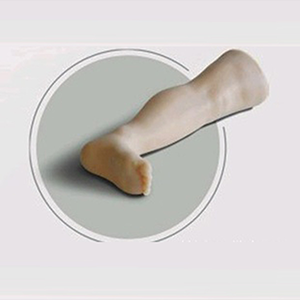From model to clinic, the seamless connection of pediatric bone puncture skills is a complex and fine process, which involves theoretical knowledge, simulation training, psychological adjustment and practical operation. The following is a detailed explanation of this process, which aims to explore how to achieve effective and seamless transfer of skills.
First of all, theoretical knowledge is the foundation of skill mastery. Before contacting the pediatric bone puncture model, medical staff need to systematically learn the relevant anatomy, pathology, pediatrics and theoretical knowledge of bone puncture techniques. These theoretical knowledge not only provided the necessary background knowledge for the subsequent simulation training, but also helped the medical staff understand the purpose, indications, contraindications, and possible risks and complications of bone puncture. Through solid theoretical study, medical staff can establish a comprehensive understanding of bone puncture technology and lay a solid foundation for subsequent practical operations.

Simulation training is the key link of skill mastery. The pediatric bone piercing model provides a near-real training platform for healthcare professionals to practice bone piercing techniques repeatedly in a risk-free environment. In the simulation training, medical staff can simulate a variety of clinical scenarios, such as pediatric patients of different ages and different conditions, as well as different puncture sites and angles. Through repeated practice, medical staff can gradually get familiar with the operating process, feel and possible abnormal situations of bone puncture, so as to improve their operating skills and coping ability.
When the medical staff reaches a certain level of proficiency through simulation training, they can gradually transition to clinical practice. In clinical practice, healthcare professionals need to continue to be cautious and attentive, and strictly follow the procedures and aseptic principles. At the same time, the medical staff also need to closely observe the reaction and condition changes of the children, and timely adjust the operation plan and treatment measures. Through continuous clinical practice and experience accumulation, medical staff can gradually improve their bone puncture skills and realize seamless connection from pediatric bone puncture model to clinical operation.
To sum up, the seamless connection of pediatric bone puncture skills from model to clinic is a process that requires the joint efforts of theoretical knowledge, simulation training, clinical practice and other aspects. Only through comprehensive study and practice, medical staff can master solid bone puncture skills and provide safer and more effective medical services for children.
